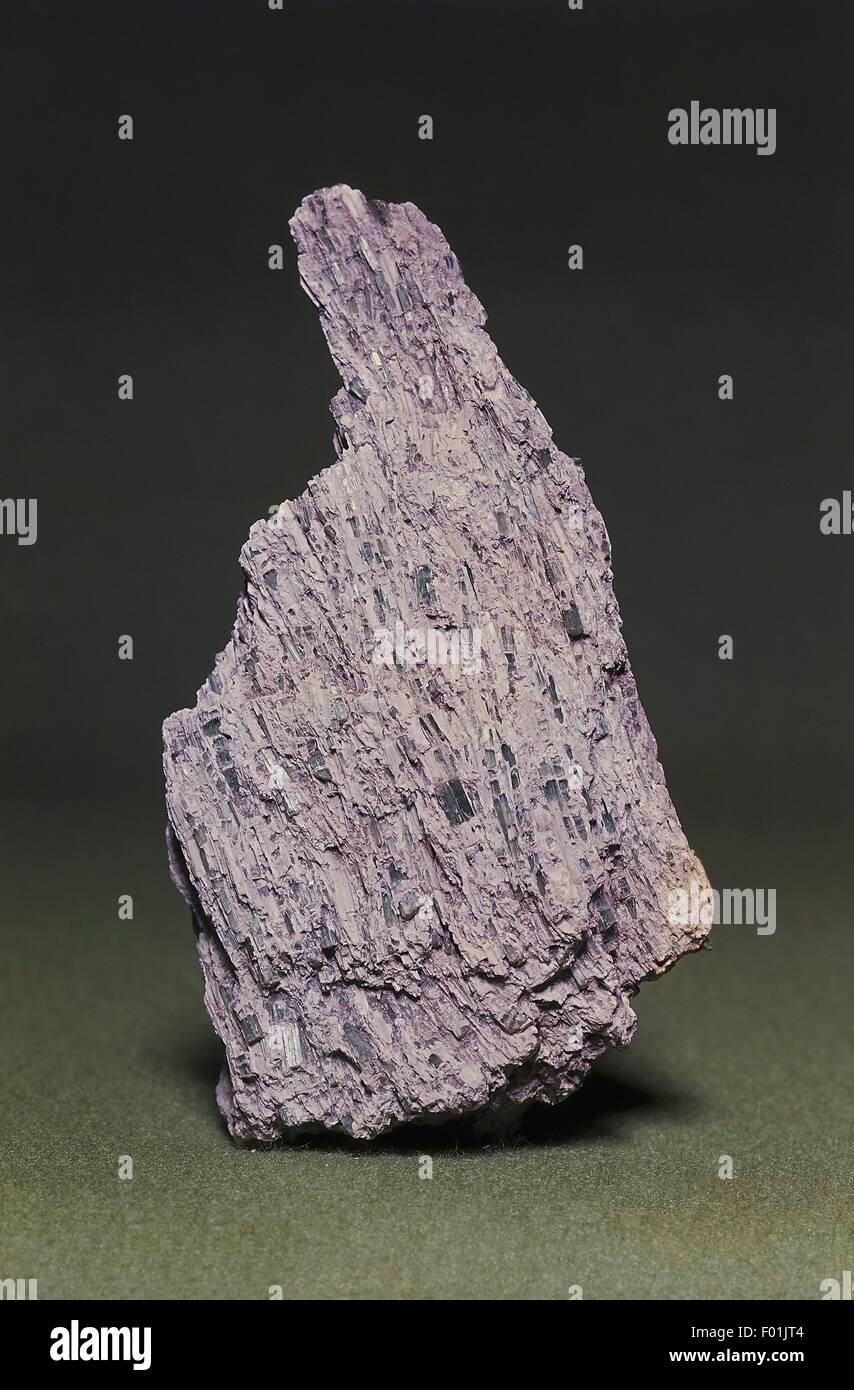What Is Magnesium Iron Silicate Hydroxide? The Silicate You Need To Know
Ever been asked if you're magnesium iron silicate hydroxide? If that sounds like a bizarre pick-up line or a cryptic scientific query, you're not alone. This complex-sounding term has recently infiltrated social media, leaving many scratching their heads. However, beneath the seemingly impenetrable name lies a fascinating mineral with a surprisingly wide range of applications and a story etched in the Earth's geological history.
Magnesium iron silicate hydroxide, often represented by the formula (Mg, Fe)7Si8O22(OH)2, isn't a single mineral, but rather a descriptor that can refer to several members of the amphibole group, most notably cummingtonite. The confusion surrounding the term stems from its chemical complexity and the fact that it's not a name you'd typically encounter in everyday conversation. But once you break down its components and understand its geological context, the "joke," popularized on platforms like TikTok, starts to make a lot more sense. It becomes a playful way to reference something complex, perhaps even a little obscure, yet ultimately grounded in the fundamental building blocks of our planet.
| Attribute | Details |
|---|---|
| Name | Magnesium Iron Silicate Hydroxide (often referring to Cummingtonite) |
| Chemical Formula | (Mg,Fe)7Si8O22(OH)2 |
| Mineral Group | Amphibole |
| Composition | Magnesium, Iron, Silicon, Oxygen, Hydrogen |
| Occurrence | Metamorphic rocks |
| Crystal System | Monoclinic |
| Habit | Fibrous, prismatic crystals; often in aggregates |
| Color | Dark brown, greyish-green, black |
| Luster | Vitreous to silky |
| Hardness (Mohs) | 5-6 |
| Specific Gravity | 3.1 - 3.6 |
| Distinguishing Features | Dark color, cleavage angles, association with other metamorphic minerals |
| Uses | Historically as asbestos (though use is now heavily regulated); sometimes as an ornamental stone |
| Formation Environment | Forms during metamorphism of magnesium-rich and iron-rich rocks |
| Associated Minerals | Quartz, feldspar, garnet, other amphiboles (e.g., anthophyllite) |
| Synonyms | While "magnesium iron silicate hydroxide" is a descriptive term, it is most commonly associated with Cummingtonite. |
| First Discovery | Cummington, Massachusetts, USA |
| Additional Information | Mindat.org - Cummingtonite |
Cummingtonite, with its rather complex chemical formula (Mg,Fe2+)2(Mg,Fe2+)5Si8O22(OH)2, serves as a prime example. It is a metamorphic amphibole, meaning it forms during the transformation of existing rocks under intense heat and pressure. The original rock, often rich in magnesium and iron, undergoes a chemical and physical restructuring, resulting in the formation of cummingtonite crystals. These crystals typically appear as fibrous or prismatic shapes, often exhibiting a dark brown or greenish-grey color. The minerals luster can range from vitreous (glass-like) to silky, depending on the size and arrangement of its fibers.
- Meet Courtney Taylor Olsen Facts About The Olsen Familys Hidden Sister
- Taurus Scorpio Friendship Compatibility Challenges More
The geological story of magnesium iron silicate hydroxide minerals like cummingtonite is intertwined with the dynamic processes occurring deep within the Earth's crust. Imagine the slow, relentless forces of plate tectonics, colliding and grinding rock formations together. As these rocks are buried deeper, the temperature and pressure steadily increase. This intense environment triggers chemical reactions, causing the original minerals to break down and recombine into new, more stable forms. This is where cummingtonite and other amphiboles come into play, crystallizing from the molten or fluid-rich environment within the metamorphosing rock.
Anthophyllite is another mineral that shares the magnesium iron silicate hydroxide composition. It is also metamorphic, commonly found in gneisses and schists that originate from magnesium-rich igneous or dolomitic sedimentary rocks. Unlike cummingtonite, anthophyllite can sometimes form through retrograde metamorphism a process where high-temperature metamorphic minerals are altered at lower temperatures. Furthermore, anthophyllite can arise from the metasomatic alteration of olivine and other ultramafic minerals when these minerals are subjected to pressure. The versatility in its formation pathways underscores the complex geological settings in which magnesium iron silicate hydroxide minerals can arise.
These minerals are not merely geological curiosities; they have had a significant impact on human society. Cummingtonite, along with other fibrous amphiboles, has historically been used as asbestos. Asbestos, prized for its fire resistance and insulating properties, found widespread application in building materials, brake linings, and various other industrial products. However, the dark side of asbestos emerged as its health hazards became undeniable. Inhalation of asbestos fibers can lead to serious respiratory illnesses, including asbestosis, lung cancer, and mesothelioma. Consequently, the use of asbestos, including cummingtonite, is now heavily regulated or banned in many countries.
Beyond its problematic use as asbestos, magnesium iron silicate hydroxide minerals can also be found in ornamental stones. The fibrous texture and attractive colors of some varieties make them desirable for creating decorative objects and jewelry. However, it's crucial to distinguish these ornamental forms from asbestos-containing varieties to avoid any health risks. Responsible sourcing and proper handling are essential when working with any mineral specimen.
The broader silicate family, to which magnesium iron silicate hydroxide minerals belong, is a cornerstone of Earth's geology. Silicates constitute the vast majority of the Earth's crust and mantle, forming the building blocks of countless rocks and minerals. Their diverse structures and compositions give rise to a wide array of physical and chemical properties, influencing everything from the stability of mountains to the fertility of soils. Understanding the silicate family is therefore essential for comprehending the dynamic processes that shape our planet.
Other related silicate minerals include hornblende, a calcium magnesium iron aluminum silicate hydroxide with the formula Ca2(Mg, Fe, Al)5(Al, Si)8O22(OH)2. Hornblende is a common constituent of igneous and metamorphic rocks, playing a crucial role in their formation and evolution. Similarly, biotite, represented by the formula K(Mg,Fe)3AlSi3O10(OH)2, is a potassium iron magnesium aluminum silicate hydroxide. Biotite, a type of mica, is found in a wide range of geological settings, contributing to the composition and properties of many rocks.
Phlogopite, another mica mineral, shares a similar formula: KMg3AlSi3O10(OH)2. While both biotite and phlogopite are micas, they differ in their chemical composition and physical properties. Biotite is typically brown to black, whereas phlogopite is often pale yellow to golden brown. These subtle differences reflect the variations in their iron and magnesium content, influencing their interaction with light and their overall appearance.
Clinochlore, a magnesium iron silicate hydroxide, forms from the metamorphic and hydrothermal alterations of other iron and magnesium silicate minerals. The name clinochlore is derived from the Greek words for inclined and green, reflecting its monoclinic structure and common green color. Clinochlore forms a series with the mineral chamosite, highlighting the continuous range of compositions and properties within this mineral group.
Serpentines, another group of hydroxyl silicates, are ubiquitous in many geological systems. These minerals are often formed by the alteration of ultramafic rocks, such as peridotite, through a process called serpentinization. The resulting serpentine minerals can exhibit a wide range of textures and colors, making them attractive for ornamental purposes.
Even clay minerals, such as those belonging to the montmorillonite/smectite group, can be considered within the broader context of silicate hydroxides. These clay minerals are characterized by their layered structure and their ability to absorb water and other molecules between the layers. This property makes them valuable in various applications, including soil improvement, toxic spill cleanup, and as a component of drilling muds.
The list goes on. Sodium calcium magnesium iron silicate hydroxide, with the formula Na2Ca(Mg, Fe)5Si8O22(OH)2, represents yet another variation within the amphibole family. The presence of sodium and calcium, in addition to magnesium and iron, expands the range of possible compositions and properties within this group of minerals.
In the realm of mineral nomenclature, "magnesium iron silicate hydroxide" is more of a descriptive classification than a specific mineral name. It encompasses a family of minerals sharing a common chemical framework but differing in their precise composition and crystal structure. This highlights the complexity and diversity of the mineral world, where subtle variations in elemental ratios can give rise to a wide range of distinct minerals.
The story of magnesium iron silicate hydroxide minerals is a testament to the dynamic nature of our planet and the intricate interplay of geological processes. From the fiery depths of metamorphic zones to the slow alteration of rocks on the Earth's surface, these minerals record a history of transformation and change. Their impact on human society, both positive and negative, underscores the importance of understanding the properties and potential hazards of the minerals that surround us.
So, the next time someone asks you if you're magnesium iron silicate hydroxide, you can smile knowingly and explain the fascinating story behind this seemingly complex term. You might even impress them with your knowledge of amphiboles, metamorphic processes, and the importance of silicates in shaping our world. And who knows, it might just be the start of a captivating conversation about the wonders of geology.
Ultimately, the viral trend highlights a growing interest in science and the natural world, even if it's initially sparked by a bit of humor. It encourages people to look up unfamiliar terms, learn about mineral compositions, and perhaps even appreciate the hidden complexities of the Earth beneath our feet. That's a pretty remarkable outcome for a seemingly silly question.
Perhaps the true meaning behind the magnesium iron silicate hydroxide trend is a playful reminder that even the most complex things can be broken down and understood. It encourages curiosity, promotes learning, and ultimately connects us to the natural world in a fun and engaging way. And who knows, it might just inspire the next generation of geologists and mineralogists.
In conclusion, while the question "Are you magnesium iron silicate hydroxide?" may seem absurd at first glance, it serves as a surprisingly effective gateway to exploring the fascinating world of minerals and geology. It's a testament to the power of curiosity and the human desire to understand the world around us, even if it starts with a seemingly silly joke.
- The Untold Story Of Band Of Brothers Captain Sobel Fact Vs Fiction
- Dd Osama Age Real Name Rise To Fame 2024 Update

essie Gel Couture Nail Polish Ingredients CVS Pharmacy

Calcium magnesium iron silicate hydroxide hi res stock photography and

Magnesium Iron Silicate Hydroxide Pick Up Line at Kelly Duppstadt blog